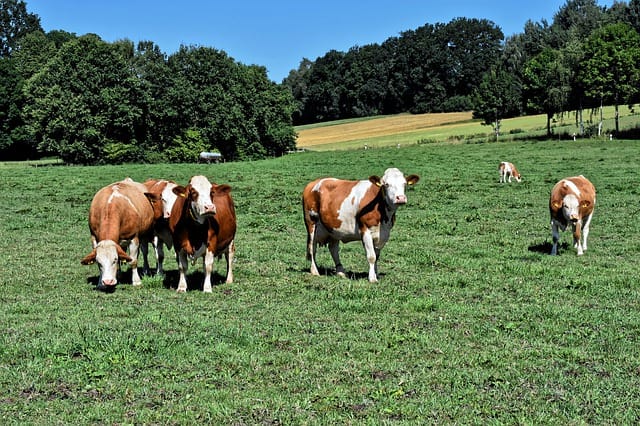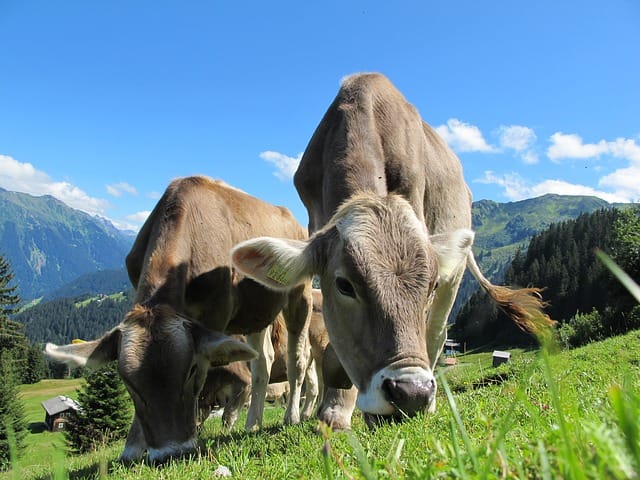Yep, you read that right. Cow Dung, the smelliest, shittiest, dirtiest … in all its natural glory. 50 years old he is so ever grateful to his aunt that he has even written a book called “Strange Cures” that describes the event.
For many, when they think about vacation, they envision going to the fair, going to the casino or maybe even relaxing on the beach and going online to Fair Go Casino.
And visiting a cow pasture filled with warm fresh cow dung does not usually make it to the top of the list of “Favorite things to do while on vacation” … actually, I doubt it would even make it to the bottom of the list.
But alas, that was 12-year old Rob Zabrecky’s daily vacation excursion in that memorable summer vacation.
Rob Zabrecky’s Story
The following was Rob’s experience.
When Rob went on vacation to visit his aunt in Scotland, he had 47 warts on his hands. His parents had already spent over $800 visiting various doctors trying to get rid of them.
“You just dip your hands deep into the cow dung and let them soak there for a few moments. Let that dung set for 20 or so minutes and rinse it away. You’ll need to do this each day for a fortnight and those warts will vanish. I promise you, laddie”, Rob recalls his aunt telling him.
Rob did as his aunt instructed, and by the time he went home his warts were already disappearing and by the time school began, they were completely gone.
Warts are frustrating to deal with. You read the stories online and people have had warts for years. If nothing is done, it can take 1 – 2 years for warts to go away naturally. Even with treatment, on average it can take around 2- 3 months for warts to clear up.
About a week ago, we discovered a plantar’s wart on the bottom of my 6 years old’s foot. These are bad, because not only are you dealing with the wart, you also have to deal with the callus that formed on top of the wart to “protect” the wart. In the case of plantar’s warts, instead of the growing outward (as it usually does on the hands), the wart grows inwards. This makes walking painful.
I went to the doctor, who prescribed salicylic acid. It was in what looked like a nail polish bottle, including what looked like a nail polish brush. 3 times a day, we put the salicylic acid on my son’s foot and then put on a regular bandage on the area to prevent the wart from spreading. Warts can be contagious if you touch a wart and then touch another part of your body. So keeping the wart covered is very important.
After three days of using this stuff, I was not noticing any changes.
I was not too fond of the prospect of dealing with this 3 times a day for 12 weeks.
I kept thinking about Rob Zabrecky’s story about his warts and his aunt’s cow dung cure. I live in a city, so finding fresh warm cow dung was not an option. But how did the cow dung work?
Why did the cow dung work to get rid of warts?
Hypothesis 1: Lack of oxygen
Did soaking warts in cow dung for 10 minutes create an environment that lacked oxygen?
Duct tape theory seems to follow this reasoning. Dr. Focht studied 51 pediatric patients. Half had their warts removed with cryotherapy (freezing the wart off), and the other half had duct tape put on their warts. The parents were told to leave the duct tape on for 6 days and to replace it if it falls off. Between duct tape treatments, the area was left uncovered for 12 hours. The parents repeated this method for two to three months. 85% of the duct tape patients were wart free compared to only 60% of the cryotherapy patients.
Dr. Frank Bures claims that you cannot suffocate a wart, because it is gettings its oxygen from the inside of the body.
I am not sure that I would agree with that view. I am not a doctor, but if the virus could survive completely from inside the body (without outside air), why doesn’t the wart just take up residence inside the body? Wouldn’t the wart be more protected inside the body rather than on the surface of the body?
Plus, if the red blood cells were reaching inside the wart, why wouldn’t our white blood cells, which travel in the same path as red blood cells, attack the wart? Why does a “normal” virus (like a cold) take 10 days to “go away”, but a wart takes 1 – 2 years to go away.
Hypothesis 2: Hostile environment
Cow dung is a hostile environment. Just like we don’t have any desire to take up residence next to cow dung, maybe wart viruses feel the same way.
Several companies sell bandages that are specifically designed for wart removal. First, they have extra cushion around the wart medicine (the pad area of the bandage). A circular disk is in the center of the bandage. This disc contains the medicine, salicylic acid.
The advantage of the disc bandage method over the brush method is that the pad is soaked with salicylic acid. The whole time that the bandage is on top of the wart, the wart is being constantly exposed to the salicylic acid. In other words, it is creating a continuous hostile environment for the wart virus.
Hypothesis 3: Warmth
Rob’s aunt specifically said to use warm fresh cow dung. Read any wart removal package and the instructions will tell you to soak the area with warm water for 5 – 10 minutes before applying the bandage.
No matter what treatment you choose, don’t leave out this important step.

Hypothesis 4: Anti-bacterial / anti-viral properties
All poop has some level of white blood cells in it even if you are not displaying “sick symptoms”.
Do you remember the story of how the smallpox vaccine was invented? A doctor noticed that girls who milked cows that had cowpox were naturally immune to the smallpox virus. So the first smallpox vaccines were injecting the patient with cowpox to help the body learn how to fight smallpox.
Did the poop contain white blood cells that could help the body to fight a wart virus? I am just speculating at this point, and I am definitely NOT a doctor. Although in 1969, a physician named Jerome Litt found that meat handlers had a greater incidence of hand warts than the general population. Could there be white blood cells in the cow dung that already knows how to fight off warts?
This got me thinking to when my son was a small child (1 – 2 years old) and he had very bad eczema due to food allergies. His pediatrician recommended, in addition to the medicine she prescribed, I was supposed to take a half a bag of dried honeysuckle flowers and boil them into a pot to create a tea. Then she told me to put this tea water into his bathwater, and place my son into the warm honeysuckle tea filled bathwater.
Honeysuckle flowers have natural anti-bacterial / anti-viral properties in them. For my son’s eczema, the combination of the honeysuckle baths and the medicine worked, as nothing else worked.
So if it worked so well for my son’s treatment of his eczema, I decided to add honeysuckle soaks to my son’s treatment of his plantar’s wart. Since the honeysuckle warm water soaks seem to work best in combination with other treatments, it is hard to say how much the honeysuckle warm water baths themselves are adding to the treatment.
Where we are today
I wish I could write that my son’s wart problems are in the past, but they are not. We already did 8 days of the wart bandages. The callous that was protecting the wart is gone. A good first step, but the actual wart is still there.
We are starting the next round of wart bandage treatments. Now that the callous is gone, I am really hoping that during this round, the actual wart will be taken care of.
I will try to remember to write an update to this article in a week to give another update.
Hoping for a successful week.
Moral of the story
Next time you go on vacation to visit your aunt, don’t discount your aunt’s whacked-out wart cure of sticking your hands into cow dung for 4 nights in a row. She just might know what she is talking about.
